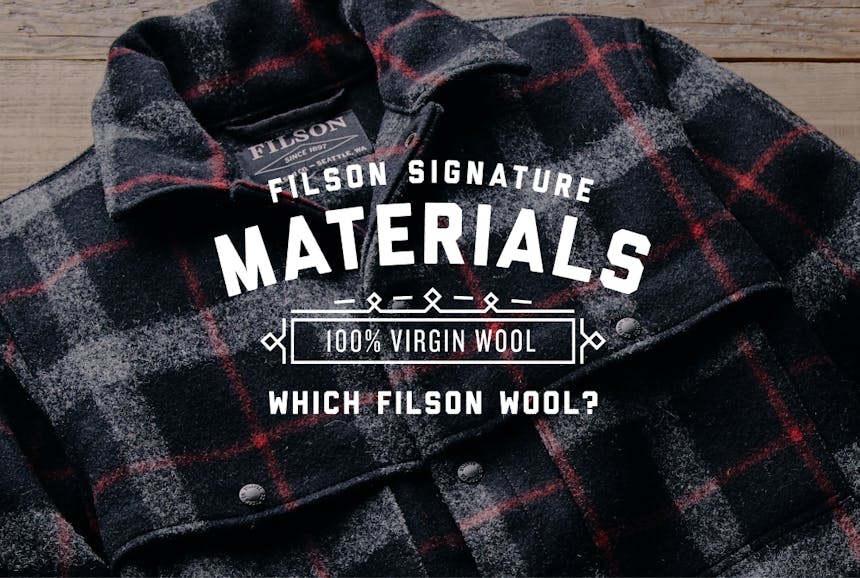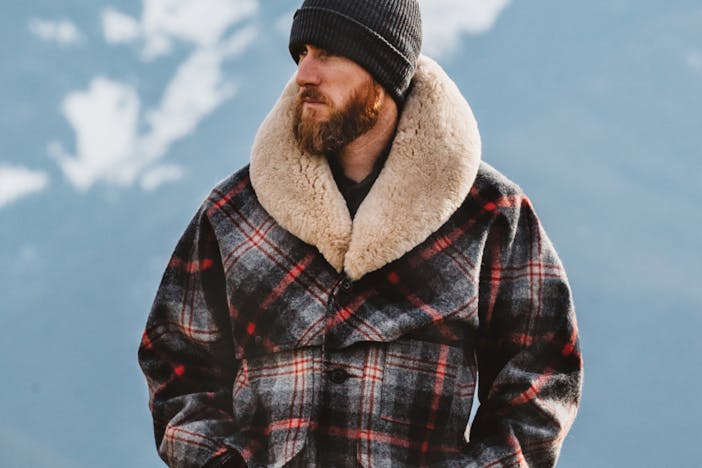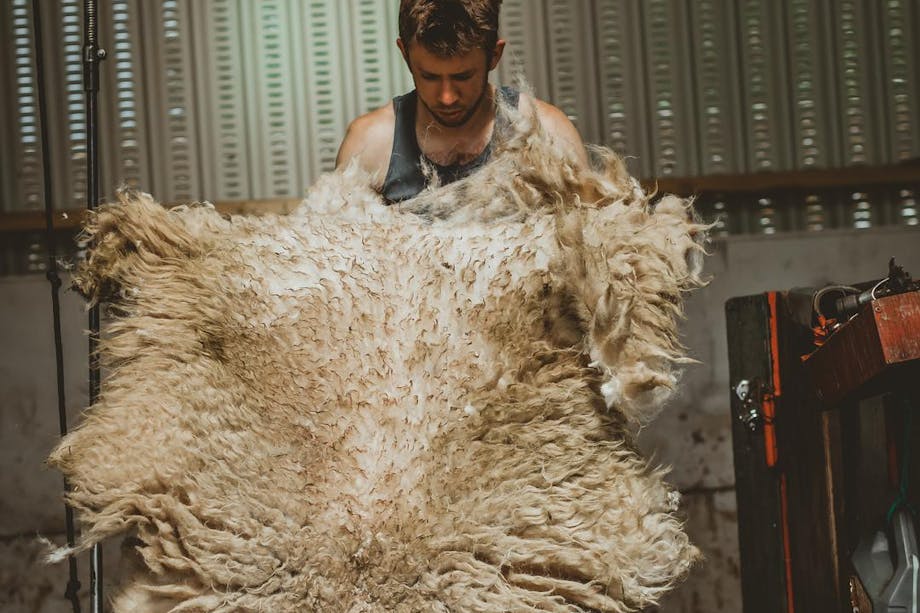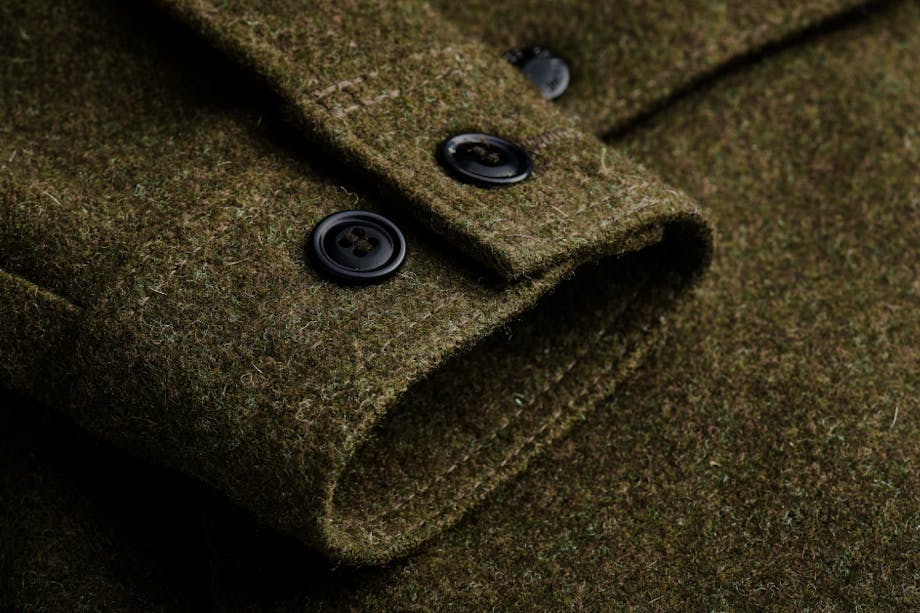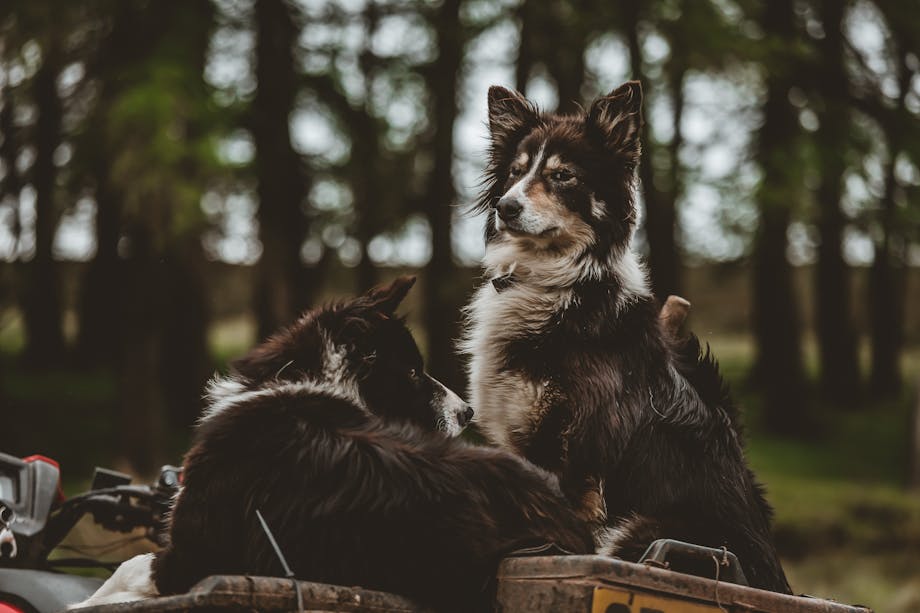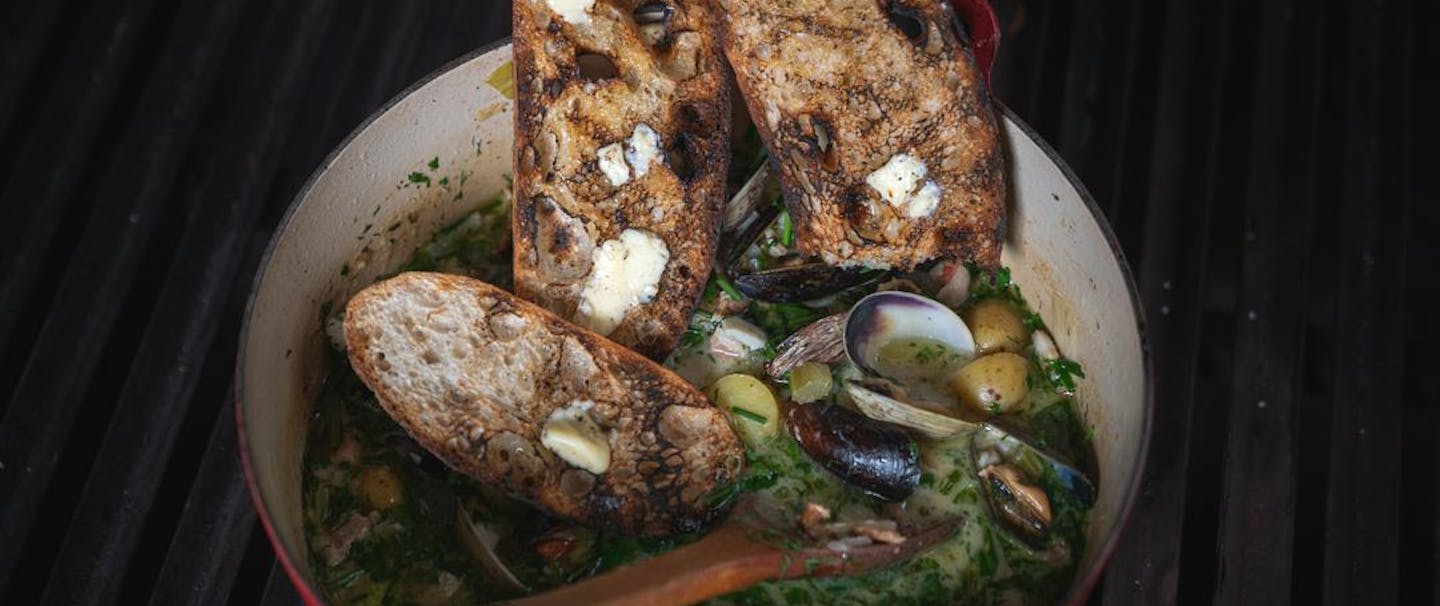For as long as history has been recorded, wool has protected people from exposure to the elements, and today it works just as well as it always has. No other material, natural or synthetic, performs as well in as many conditions as wool.
How It’s Made Matters
There are countless factors that determine the final performance characteristics of wool clothing, literally starting from the ground up. The grasses and plants on which sheep graze affects their fleece, as does the climate in which they live. Some breeds grow fine, soft fleece, while others are coarser and stiffer. The fleece can be spun into woolen yarns, with air trapped between the fibers yielding a yarn that is light and lofty. Alternatively, it can be spun into worsted yarns by combing and aligning the fibers, then spinning them tightly into a hard and dense yarn. The yarns are then either woven on looms into fabric with very little give in either direction, or knitted into a four-way stretchable fabric.

The art of weaving has developed over centuries, with rapid advancement since the late 1700s inventions of shuttle and power looms.
Woven Wools
Woven wool is made with tightly-spun yarns arranged on a loom and woven in a specific pattern, typically a twill weave with offset warp and weft yarns. Twill fabrics are characterized by diagonal rib that is created, and have a natural, supple drape. Compared to knits, woven wools tend to be more wind-resistant and less susceptible to snagging, since there are no loops used in the weaving of wool.

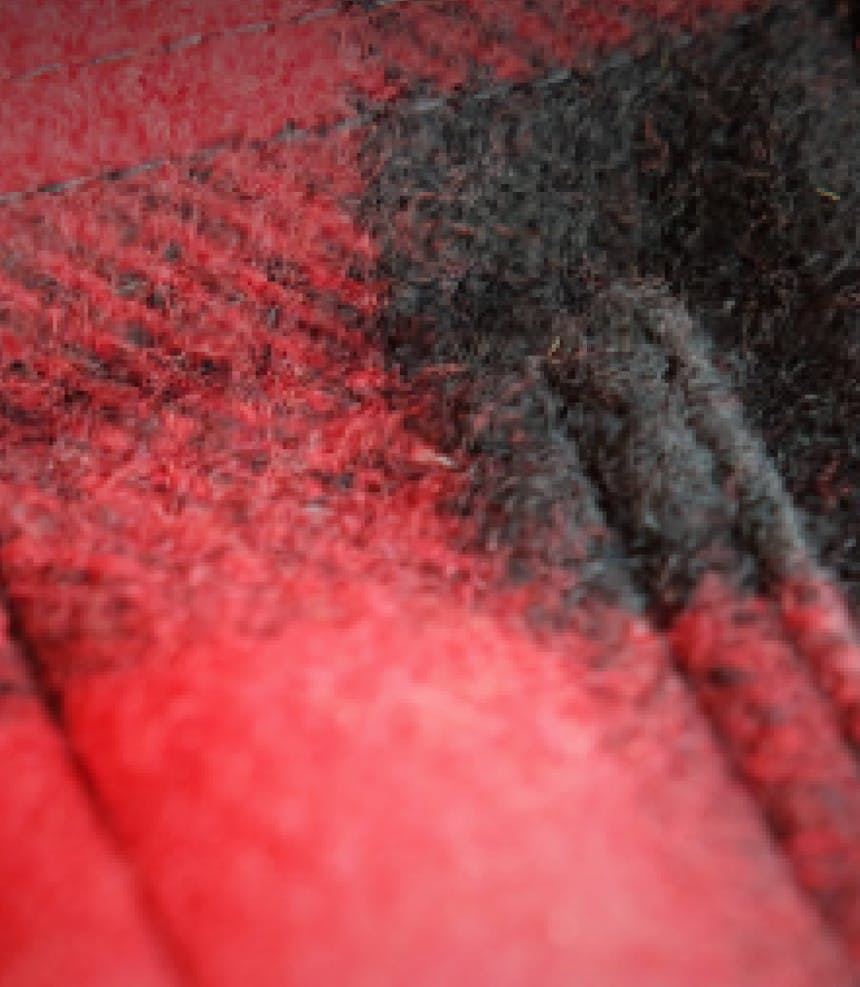
Mackinaw Wool’s tight weave produces a low-bulk fabric that’s warm and breathable, making it equally suitable for vests or coats. Buy the Mackinaw Wool Vest
Mackinaw Wool
Mackinaw Wool comes from a variety of sheep raised in climates with wide swings of temperature. Cold winters and hot summers cause the sheep to grow fleece that can protect them year-round. This is what makes our wool so adaptable and able to regulate body temperature in such a wide range of weather conditions.
The long and sturdy fleece fibers are tightly spun into yarns with great tensile strength. At 24-oz. to 26-oz., Mackinaw is the thickest, warmest wool that we use for clothing, and ideal for outer-layers such as the Mackinaw Wool Cruiser and Mackinaw Wool Pants. Since Mackinaw Wool is made from larger-diameter fibers, it can be a bit scratchy, and most will prefer to wear it with long sleeves covering their arms and long-johns covering their legs. But it’s those larger-diameter fibers along with the tight, dense weave that makes Mackinaw Wool so durable and weather-resistant. This is the fabric on which Filson built a reputation for manufacturing clothing that withstands the elements as well as the test of time.
Just as we did during the Alaskan Gold Rush, we also manufacture Mackinaw Wool Blankets which use the same wool fibers, but are woven with thicker yarns to create 35-oz. blankets.
“I was in a severe airplane crash while working as a guide in Alaska. I laid in the snow for eleven hours at 25 degrees. If it hadn’t been for your Filson coat which kept me warm and dry, I wouldn’t be writing this letter today.”
- Robert Wener, Delta Junction, AK -
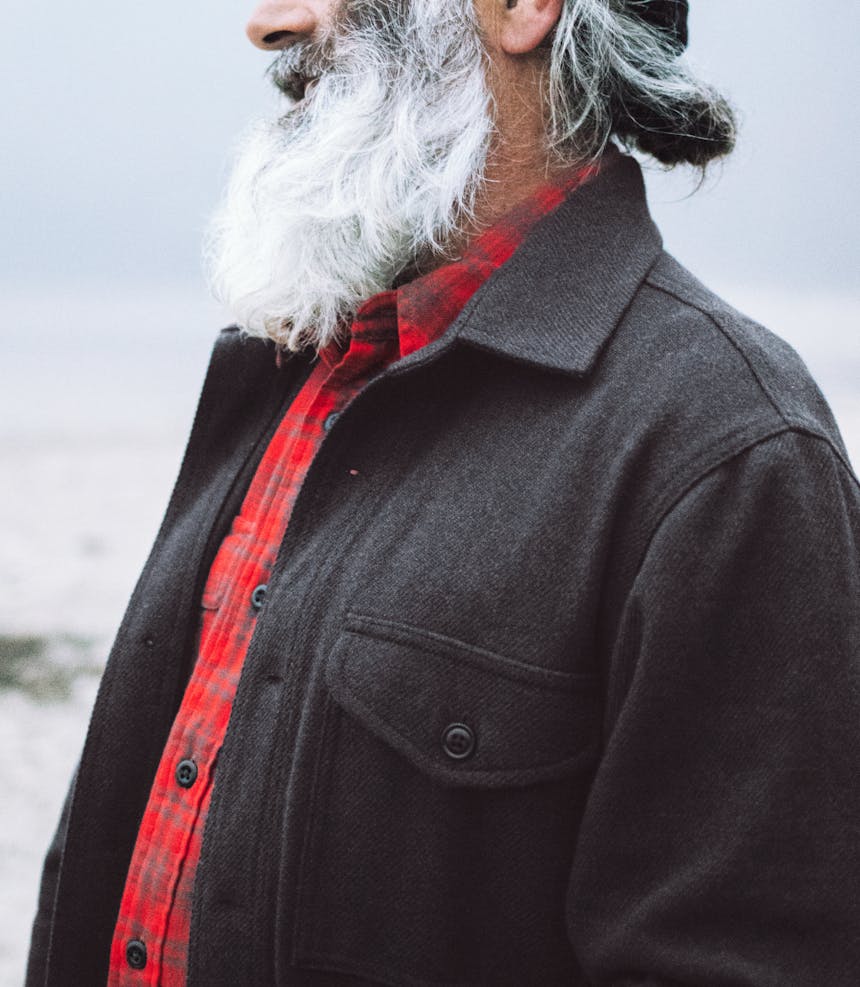
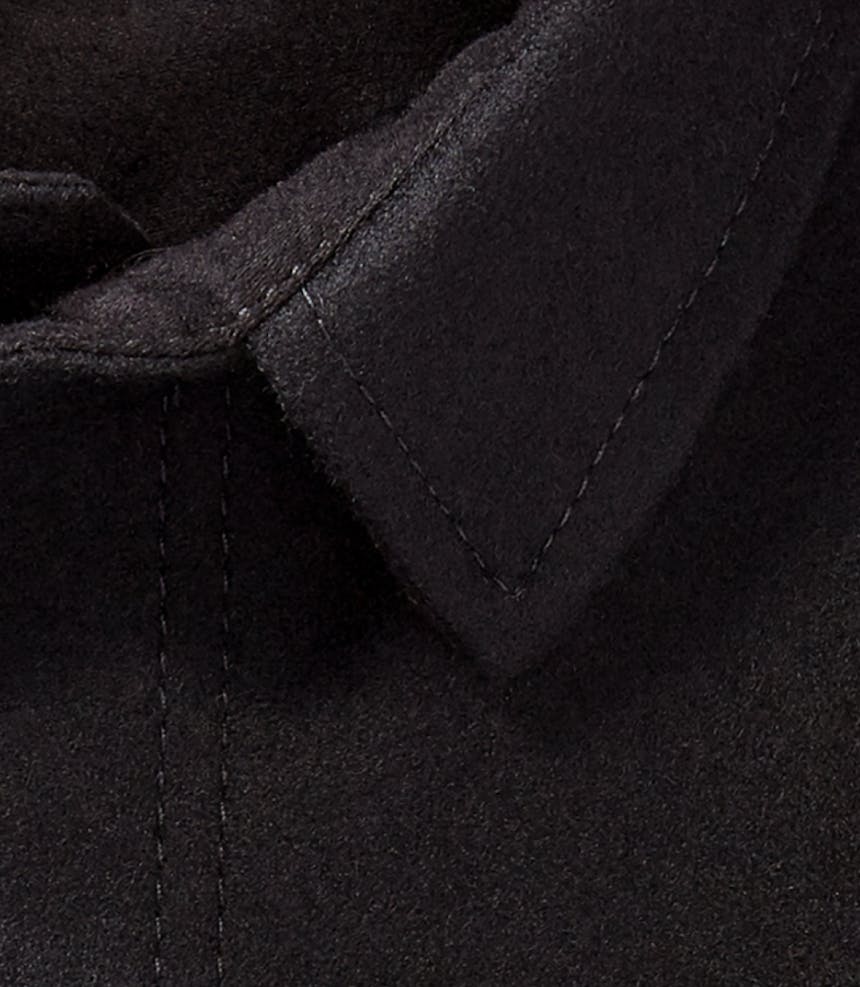
Seattle Wool is the ideal crossover fabric, performing equally well as a mid-layer or light outer layer. Its versatility is unmatched.Buy the Seattle Wool Jac-Shirt
Seattle Wool
Seattle Wool is woven with wool from various sheep breeds known for strong, sturdy fleece fibers. They’re raised in regions around the world with drastic temperature swings from winter to summer. These climates causes the sheep to develop a fleece that protects them in both hot and sub-freezing weather.

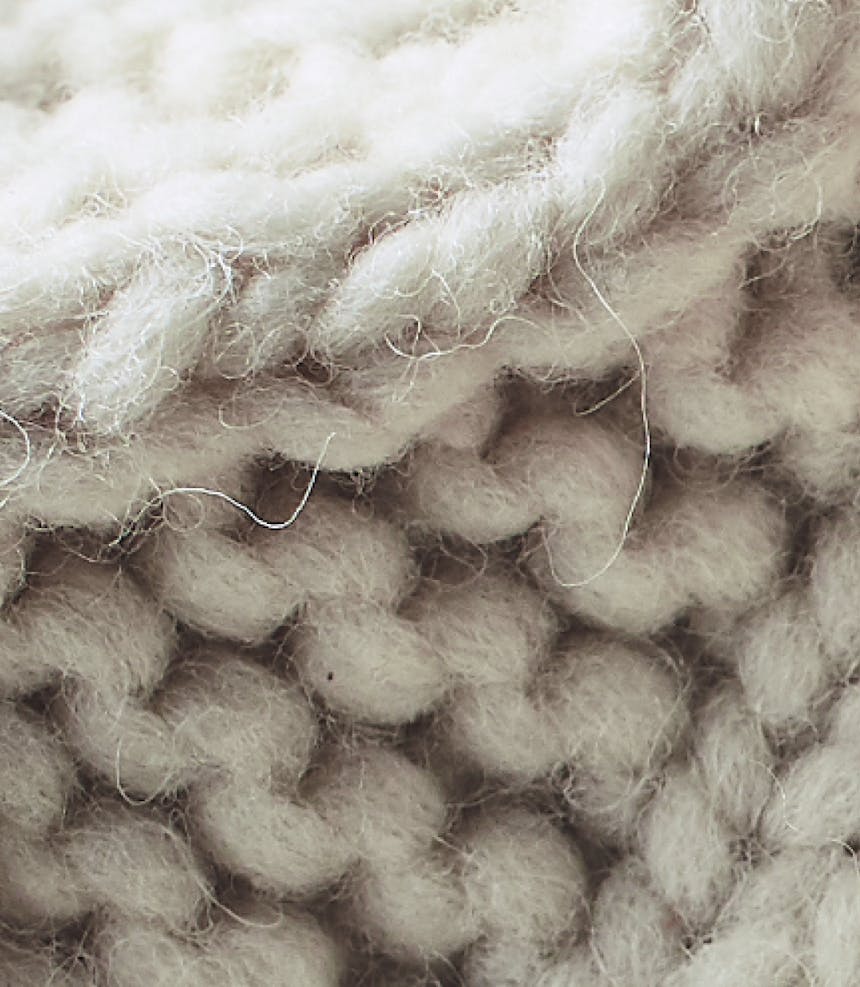
Crafted with interlocking loops of yarn, wool knits excel at trapping body heat and have evolved into an artform with intricate designs in both their colors and textures.
Knitted Wools
Knitted wools consist of a series of interlocked loops of yarn, and can be crafted by hand with knitting needles or by machine. Knitting is an art – in many regions around the world, techniques and designs identify with specific communities and cultures. There are dozens of different stitches used for knitting, and infinite combinations possible to make intricate textural and color patterns. Knits tend to be highly breathable, though at the expense of wind-resistance. The loopy fabric excels at trapping heat, which makes it ideal for base layers, socks, caps and sweaters.
Filson sweaters are made with soft, fine wool from countries around the world including America, The British Isles, Peru, New Zealand and Australia. They provide excellent insulation with stretch for unmatched comfort. Though a wool sweater won’t stop the wind like a tightly-woven wool, it will have the all the same ability to insulate even if it gets wet. Sweaters make an ideal outer layer on cool, still days, and a powerful insulating layer under a rain coat on windy or wet days.
Lambswool
Lambswool is a longtime favorite for making sweaters, scarves and hats. It is made with fleece taken from the lamb’s first shearing, typically at approximately 7-months of age. Because the fleece has never before been shorn, the tips of the fibers are the softest they’ll ever be. Lambswool is also a bit more scarce, due to the limited number of lambs compared to sheep ranging up to ten or twelve years of age.

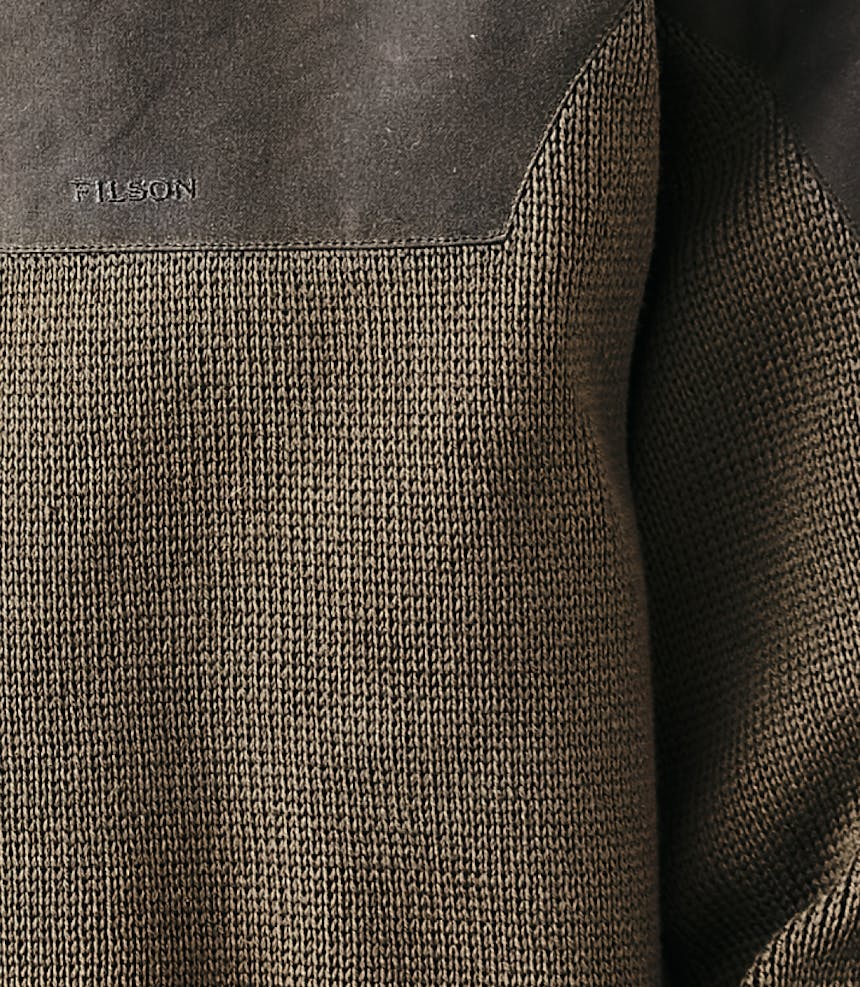
Merino sheep produce wool with exceptionally-fine fibers, with average diameters one fifth that of human hair. Merino wool’s softness makes it ideal for knitting sweaters and base layers.Buy the Henley Guide Sweater
Merino Wool
Merino wool is another staple for knitting sweaters. Merino sheep originated in Spain as far back as the 12th century, and today the majority of the world’s merino wool comes from sheep raised in Australia. Merino wool’s super-fine diameter makes it soft and comfortable against the skin, and its natural crimp (waviness) aids its ability to stretch and recover. Filson’s Crewneck and Henley Guide Sweaters are tightly knitted with very densely-spun merino yarns to create heavy, warm sweaters that are extremely durable.
Merino wool’s softness and moisture-management ability also make it a terrific choice for next-to-skin layers. Many people are returning to merino wool as their preferred choice over synthetics, finding its passive moisture-wicking to be more comfortable during stop-and-go activities.
400g merino layers straddle the line between lightweight sweaters and extremely warm base layers, and in subfreezing temperatures, nothing beats them. 280g merino bottoms and long-sleeve crewnecks are extremely versatile, providing comfort in a wide range of temperatures. For active use in near-freezing weather, often a 280g Long-Sleeve Crewneck, a warm shirt and wool vest will be all one needs. A short-sleeve T-shirt made with 210g merino can be worn as a base layer in cool weather, and also performs well in the heat due to wool’s natural ability to regulate our body temperature.
Merino wool’s ability to insulate and transport moisture away from the skin makes it an ideal material for socks. Wool socks are frequently made with a blend of merino for warmth, nylon or polyester for strength and spandex for stretch. In many cases, the higher the wool content, the warmer the socks will be.

Today, we have more options for weather-protection than at any time in history. Wool’s ability to protect in such a wide range of conditions gives it unmatched versatility, and understanding the differences between various wools can help in choosing the right wool for your uses.
